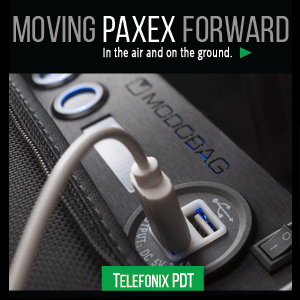It seems that the only person surprised by the decision to retire the Virgin America brand is Richard Branson. Alaska Airlines made the news official on Wednesday evening, starting the clock on the eventual disappearance of Virgin America, currently slated for some time in 2019. Branson responded with a sappy and strangely focused open letter, reveling in the history of the operation while glossing over the main point: Virgin America was a publicly traded company that Branson did not run. Yet it seems he saw it as his baby.
For its part, Alaska Airlines indicated that it will adopt some of the passenger-focused features for which Virgin America is known, including music at the gate areas and during boarding, and mood lighting on board the aircraft. Some of the better amenities from the Alaska side of the operation will head to the Airbus fleet, with complimentary movie content coming to Virgin America’s ‘Red’ inflight entertainment system in August 2017. The same fleet will receive free access to chat services via inflight internet provider Gogo at that time as well.
The Airbus fleet will also receive more first class seats – moving to 12 from the current 8 – but they will see pitch reduced to 41″. Those aircraft will also have 18 ‘Premium Class’ extra legroom seats on board. That retrofit is scheduled to begin in Q4 2018. On the Boeing side, Alaska Airlines promises “an entirely redesigned cabin with new seats and amenities” starting in 2018. Those 737s only recently saw the Premium Class legroom seats roll out so another cabin redesign project is somewhat surprising. Details are scarce on exactly what the new cabin will bring.
Other changes will affect the combined carrier. A new satellite-based wifi solution is coming to Alaska starting in late 2018 with the full fleet to be fitted by the end of 2019. For now, the company is keeping details secret on which vendor will provide that solution. In 2018 the combined carrier will also consolidate to Alaska’s MileagePlan loyalty program, retiring Virgin America’s Elevate. Alas, access to complimentary upgrades on the Airbus fleet for top elites remains on the distant horizon, coordinated with the fleet retrofit at the end of 2018. The whole company will see new uniforms from designer Luly Yang rolling out in mid-2019.
That we’re looking at late 2019 to get to a full integration and new product is slower than I expected. One would think that in keeping nearly all of the Alaska Airlines parts, and absorbing the Virgin America bits in certain processes, a quicker integration would be possible. It is somewhat disappointing as a customer to know that the inconsistency will remain for years yet. On the plus side for the company, it gets to retrofit the 737 fleet and call it part of merger integration costs, allowing it to report those expenses as one-time exceptions and not burden the earnings reports so much.
Branson believes the brand is bigger than the airline, saying, “Businesses come and go but beloved brands make lasting impressions and remain in your heart.” I can agree that Virgin America made an impression on me. I’m an East Coast guy so convenient opportunities to fly Virgin America were few and far between. I finally flew a Virgin America transcon in first class back in 2009 and thoroughly enjoyed the service and the free wifi, a novelty at the time.
In 2009 I flew @VirginAmerica LAX-JFK in F. Great crew, fun flight & free wifi. I snagged a couple promo shirts. Wore one today. #paxex pic.twitter.com/Nysy1D2cJJ
— Seth Miller (@WandrMe) March 23, 2017
The crew was friendly and the seat was comfortable, a leading product a decade ago. Alas, it did not age well and any chance of the brand surviving would have meant a major investment to refresh a number of components on board, from the first class seats to the in-seat IFE to catering and more.
 The competitive market changed dramatically in the intervening years and Virgin America mostly sat idle during that time. Yes, the Red inflight entertainment system saw an upgrade along the way but the overall product remained virtually untouched. And in a competitive market (yes, the US airline industry is still competitive, even with consolidation, especially on the West Coast) the costs to run two separate brands simply did not make sense. Oh, and remember that operating as Virgin America means paying out a percentage of revenue to the Virgin Group to license the name.
The competitive market changed dramatically in the intervening years and Virgin America mostly sat idle during that time. Yes, the Red inflight entertainment system saw an upgrade along the way but the overall product remained virtually untouched. And in a competitive market (yes, the US airline industry is still competitive, even with consolidation, especially on the West Coast) the costs to run two separate brands simply did not make sense. Oh, and remember that operating as Virgin America means paying out a percentage of revenue to the Virgin Group to license the name.
At the end of the day, running an airline requires a massive capital investment and compliance with myriad regulations. Branson’s tears aside, investors in Virgin America wanted to get paid out and they did in a big way. Business trumps brand most every time, even if that’s not what he wants.
Related Articles:











